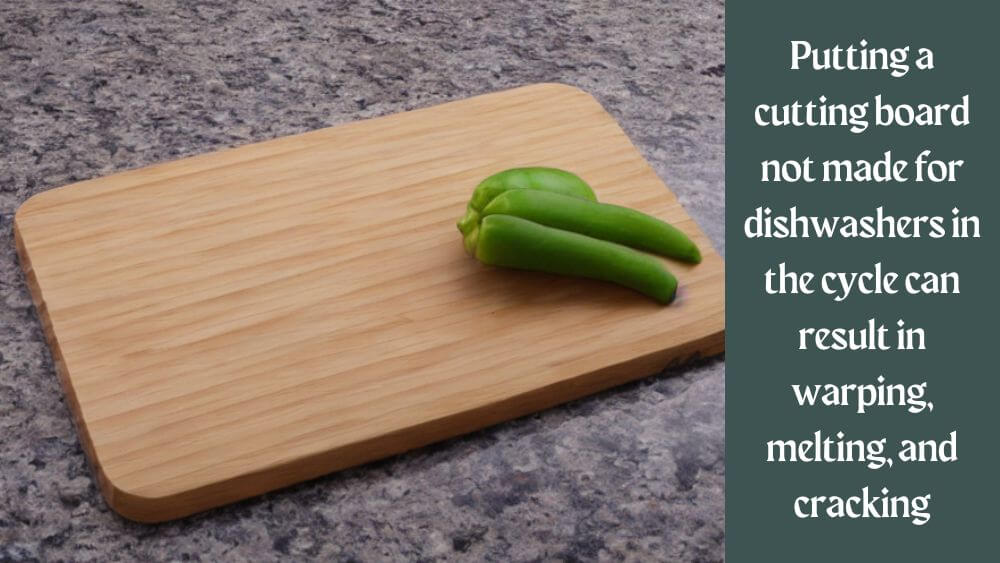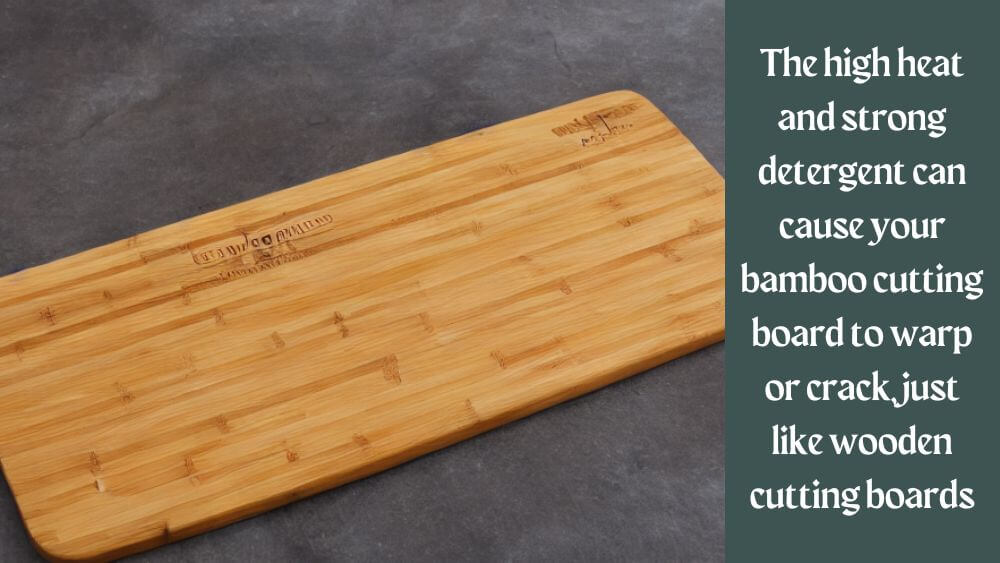Introduction
Cleaning cutting boards can be tricky, especially if you need to become more familiar with your specific type of cutting board. One of the first things you need to consider when cleaning a cutting board is the material it’s made from. For example, you can safely put cutting boards made from thick plastic or rubber labeled as dishwasher safe in the dishwasher. However, cutting boards made from thin plastic, wood, metal, or other materials, like glass, should not be put in the dishwasher as it may cause damage to the board.
To clean these cutting boards, use a mixture of vinegar and baking soda or hot water and soap. By taking the time to understand the best cleaning method for your cutting board, you can ensure its longevity and avoid wasting money on a damaged board. You should remember that each cutting board is unique and requires a different cleaning method. So, it’s essential to familiarize yourself with the proper cleaning technique for your cutting board. You can put a cutting board in the oven for sanitation purposes but putting a cutting board in the oven is a little risky.
Putting a Cutting Board in the Dishwasher is Dangerous
Whether you can put your cutting board in the dishwasher depends on the type of cutting board you have. Wooden, bamboo and glass cutting boards should not be placed in the dishwasher as the high heat, and strong detergent can cause the wood to warp or crack. These cutting boards should be washed by hand using warm water and mild detergent and dried thoroughly to prevent warping or splitting.
You’re risking a whole list of problems if you put a cutting board in the dishwasher that’s not made to withstand heat and moisture. These are a few issues you might run into:
Warping or cracking of the board
If you put a cutting board that is not dishwasher safe in a dishwasher, the heat and moisture can cause it to warp or crack. As a result, the board will need to be more stable and easier to use.
Growth of bacteria or mold in cracks or warps
If a cutting board cracks or warps, it can trap moisture and create an ideal environment for bacteria and mold to grow. Continue using the board for food preparation could pose a severe health risk.
Discoloration or fading of the board
The harsh chemicals in dishwashing detergents can also cause a cutting board to discolor or fade over time. If this happens, it can decrease the appeal of the board.
Splintering of the board surface
The heat and moisture in a dishwasher can cause the surface of a cutting board to splinter and become rough. Food can become harder to cut, and your hands can also get cut.
Leaching of harmful chemicals into food
Some cutting boards are made with materials that can leach harmful chemicals into food when exposed to heat and moisture. A serious health risk can arise from this, and the food may not be safe to consume.
Melting cutting board
The cutting board will no longer be usable if it melts. It’ll likely drip onto other dishes, so you’ll waste money. It doesn’t just affect the cutting board; it can affect multiple dishes and even the dishwasher.
The melting may be mild, but you should avoid it if possible. It’s impossible to guarantee a small amount of melting or none.
Cracking wood-cutting board
If your wood-cutting board begins to crack, it will become difficult to use. The surface will become uneven, and it may disrupt your cutting process. Though washing your cutting board once may only cause small cracks, continuous washing in the dishwasher could cause it to split in half.

Dangers of placing cutting boards in the dishwasher
Wood cutting boards
No, you cannot put wooden cutting boards in the dishwasher as they may warp or crack from the high heat and water. Wooden cutting boards (face, edge, or end grain) are a popular choice for their natural look and feel and their ability to reduce the dulling of knives. However, you cannot put wooden cutting boards in the dishwasher as they may warp or crack from the high heat and water.
The best way to clean a wooden cutting board is to wash it with hot water and soap, then sanitize it with a bleach or vinegar solution. To prevent warping and cracking, wooden cutting boards should be treated with mineral oil or beeswax periodically to maintain their integrity.
The high heat of the dishwasher can also cause the wood fibers to swell and shrink as the board cools. As a result, the board may warp or split. The strong detergents used in dishwashers can also strip the natural oils from the wood, leaving it dry and more susceptible to cracking.
Additionally, constant exposure to water and detergent in the dishwasher can cause the wood to become discolored or develop a rough texture. As a result, it may become less attractive and less enjoyable to use.
For these reasons, it’s recommended that you wash wooden cutting boards by hand using warm water and mild detergent. After washing, dry them thoroughly to prevent warping or splitting. It would be best if you also oiled the board after each wash to keep its appearance and prevent cracks. Also, avoid submerging your wooden cutting board in water for long periods.
Bamboo cutting boards
Even though bamboo cutting boards are less dangerous than wooden cutting boards, dishwashers are still not the best place to put them. The high heat and strong detergent can cause your bamboo cutting board to warp or crack, just like wooden cutting boards. The constant exposure to water and detergent can cause the bamboo fibers to swell and shrink as the board cools, which can cause the board to warp or split. Also, strong detergents can strip the natural oils from the bamboo, leaving it dry and more susceptible to cracking.
Moreover, the dishwasher can cause your bamboo cutting board to lose its natural color and can make it dull. For these reasons, it’s recommended to wash your bamboo cutting board by hand using warm water and mild detergent and dry them thoroughly to prevent warping or splitting. It’s also a good idea to oil the board after each wash to maintain its appearance and prevent cracking. It is also worth noting that many bamboo cutting boards are made with resin or glue to hold the bamboo fibers together, so it would be best to check the manufacturer’s instructions before placing them in the dishwasher.
Glass cutting boards
We do not suggest placing your glass cutting board in the dishwasher. Glass cutting boards are less durable than plastic or rubber cutting boards and can crack or break when exposed to the high heat and strong detergents of a dishwasher. Additionally, constant exposure to water can cause the glass to warp or develop stress fractures over time.
You should wash your glass cutting board by hand using warm water and mild detergent and dry it thoroughly to prevent warping or cracking. It’s also important to carefully handle your glass cutting board, as it can be fragile and prone to breaking.
It’s worth noting that glass cutting boards are non-porous and non-absorbent, making them less likely to absorb bacteria and odors, and they are also easy to clean but are not as durable as plastic or rubber cutting boards.

Dishwasher Safe Cutting Boards
Some cutting boards, such as those made from plastic, rubber, silicon, stainless steel, and composite materials, are labeled as “dishwasher safe” and can be safely cleaned in the dishwasher. These cutting boards are durable and can withstand high temperatures and detergents used in the dishwasher. However, you should check the manufacturer’s instructions and recommendations before putting your cutting board in the dishwasher to ensure it can withstand heat and detergents.
Plastic cutting boards
You can put plastic cutting boards in the dishwasher. Plastic cutting boards are made from materials such as polypropylene or high-density polyethylene which are durable and can withstand the high heat and strong detergents of a dishwasher.
However, it’s still a smart idea to check the manufacturer’s instructions before placing any plastic cutting board in the dishwasher to ensure it is safe.
You should also use the top rack of the dishwasher and avoid using high-heat or heavy-duty detergents. Drying the cutting board thoroughly after washing it in the dishwasher is also critical to prevent warping or cracking.
Rubber cutting boards
You can place your rubber cutting board in the dishwasher. The rubber material can withstand high temperatures and will not warp or melt. However, check for non-heat-resistant components, such as plastic or metal pieces, that may be attached to the board, and remove them before placing the board in the dishwasher to avoid hot water and steam damage.
Check the size of your rubber cutting board before placing it in the dishwasher. Compare it to the dimensions of your dishwasher to ensure it fits. By following these steps, you will effectively clean your rubber cutting board without causing any damage.
Silicone Cutting Boards
You can place silicone cutting boards in the dishwasher. Silicone is heat-resistant and non-porous. It won’t warp or melt and is less likely to crack or chip. However, check for non-heat-resistant components such as plastic or metal pieces that may be attached to the board. Remove them before placing them in the dishwasher to avoid damage from hot water and steam.
You should measure the size of your silicone cutting board before placing it in the dishwasher. Compare it to the dimensions of your dishwasher to ensure it fits. Always check the manufacturer’s instructions before putting the silicone cutting board in the dishwasher to ensure it’s safe.
Composite Cutting Boards
Generally, composite cutting boards are safe to clean in the dishwasher. These boards are often made of a combination of heat and moisture-resistant materials, making them great for dishwasher cleaning. However, it’s important to note that they should be placed on the top rack only to prevent excessive heat and water pressure.
When washing composite cutting boards in the dishwasher, it’s best to avoid using harsh detergents or bleach. These can damage the material and potentially ruin the board. Instead, use mild dish soap and warm water to effectively remove bacteria and food particles without causing any harm to the board. This will help ensure the longevity of your composite cutting board.
Stainless Steel Cutting Boards
Stainless-steel cutting board in the dishwasher is safe. Unlike wooden or bamboo cutting boards, stainless steel is designed to be durable and resistant to high temperatures. Therefore, it can withstand the heat and pressure of a dishwasher cycle without any damage. Additionally, stainless steel surfaces are non-porous, meaning they will not absorb water or food particles that could lead to contamination.
You should take certain precautions when washing your stainless-steel cutting board in the dishwasher. You should place it away from other dishes to prevent scratching during the cycle. Additionally, if you cannot remove any stubborn stains on the board with soap and water, you should pre-treat them before putting the board in the dishwasher. Lastly, ensure the board is completely dry to prevent water spots or rust. Your stainless-steel cutting board can last many years with proper care and maintenance.

Steps of Cleaning Cutting Boards
Cutting boards can become contaminated with harmful bacteria, such as Salmonella and E. coli if they are not properly cleaned and disinfected. These bacteria can cause food poisoning and other illnesses if not removed. Additionally, dirty cutting boards can transfer bacteria to different surfaces and food items in the kitchen, spreading contamination further. Regular cleaning and disinfecting of cutting boards can help prevent the spread of bacteria and ensure that your kitchen stays clean and safe. Here are 8 specific steps you can take to clean your cutting board:
- Start by wiping the cutting board’s surface with a damp cloth or sponge to remove any loose debris.
- Use hot, soapy water and a scrub brush or sponge to scrub the cutting board’s surface. Be sure to clean all surfaces, including the sides and corners.
- Rinse the cutting board thoroughly with hot water to remove any remaining soap and debris.
- Disinfect the cutting board using one tablespoon of chlorine bleach per gallon of water or a commercial sanitizer.
- Allow the cutting board to air dry, or pat dry with a clean towel.
- For cutting boards made of wood, it’s essential to keep them adequately oiled to prevent cracking and warping. Use mineral oil, beeswax, or food-grade oil to maintain the wood.
- For plastic cutting boards it’s essential to replace plastic cutting boards when they become too deeply scored or stained.
- Avoid using abrasive cleaning pads or steel wool, as these can damage the cutting board’s surface. Instead, use a scrub brush or sponge.
You must regularly clean and disinfect your cutting boards to prevent the growth of bacteria and ensure that your kitchen stays safe and healthy. These steps will help keep your cutting boards clean and in good condition.
FAQs
How should I prepare my cutting board for the dishwasher?
Before placing your cutting board in the dishwasher, scrape off any food debris and rinse it with warm water. If the cutting board is particularly dirty, you may wash it by hand before placing it in the dishwasher.
Should I wash my cutting board in the dishwasher regularly?
It is recommended to wash your plastic, silicone, stainless steel, composite & rubber cutting board in the dishwasher regularly to ensure it is thoroughly cleaned and sanitized. However, using the dishwasher sparingly for your cutting board is also important, as it can cause warping or splitting.
What are the benefits of washing my cutting board in the dishwasher?
Washing your cutting board in the dishwasher can be a convenient and effective way to clean and sanitize it. The high-temperature water and detergent used in the dishwasher can help to kill bacteria and germs that may be present on the cutting board.
Can I put my cutting board in the dishwasher with my other dishes?
You can put your cutting board in the dishwasher with your other dishes. However, it is important to ensure that the cutting board does not come into contact with sharp utensils or dishes during the wash cycle to prevent damage.
Should I use any special detergent for washing my cutting board in the dishwasher?
No, you need no special detergent for washing your cutting board in the dishwasher. However, it is important to make sure that the detergent you are using is safe for cutting boards, as some detergents may contain harsh chemicals that can damage the cutting board’s surface.
How should I dry my cutting board after washing it in the dishwasher?
After washing your cutting board in the dishwasher, dry it thoroughly with a clean towel. It’s also recommended to let it air dry. Avoid leaving it in the dishwasher or a damp area, as it may cause warping, cracking, or swelling.
Conclusion
So now you know what cutting boards you can wash in the dishwasher. This article makes it easier for you to make your decision. It would help if you wash your cutting board in the dishwasher on a low setting and not too often. Additionally, check that your cutting board is dishwasher-safe before cleaning it, and use a mild detergent. With these precautions in mind, you can safely and effectively wash your cutting boards in the dishwasher.

As the chief content writer, Hassan Al Sarker works as a professional kitchen-based content creator at Kitchen Liker.
In addition to reviewing the content published on Kitchen Liker, he ensures that it is accurate, relevant, and helpful. As a result, all the reviews and information published at Kitchen Liker are neutral and userfriendly.
Hassan Al Sarker has a bachelor’s degree in Hotel and Tourism Management From the Newyork University. Before joining Kitchen Liker, he was a contributor at Kitchen Club, United States.

